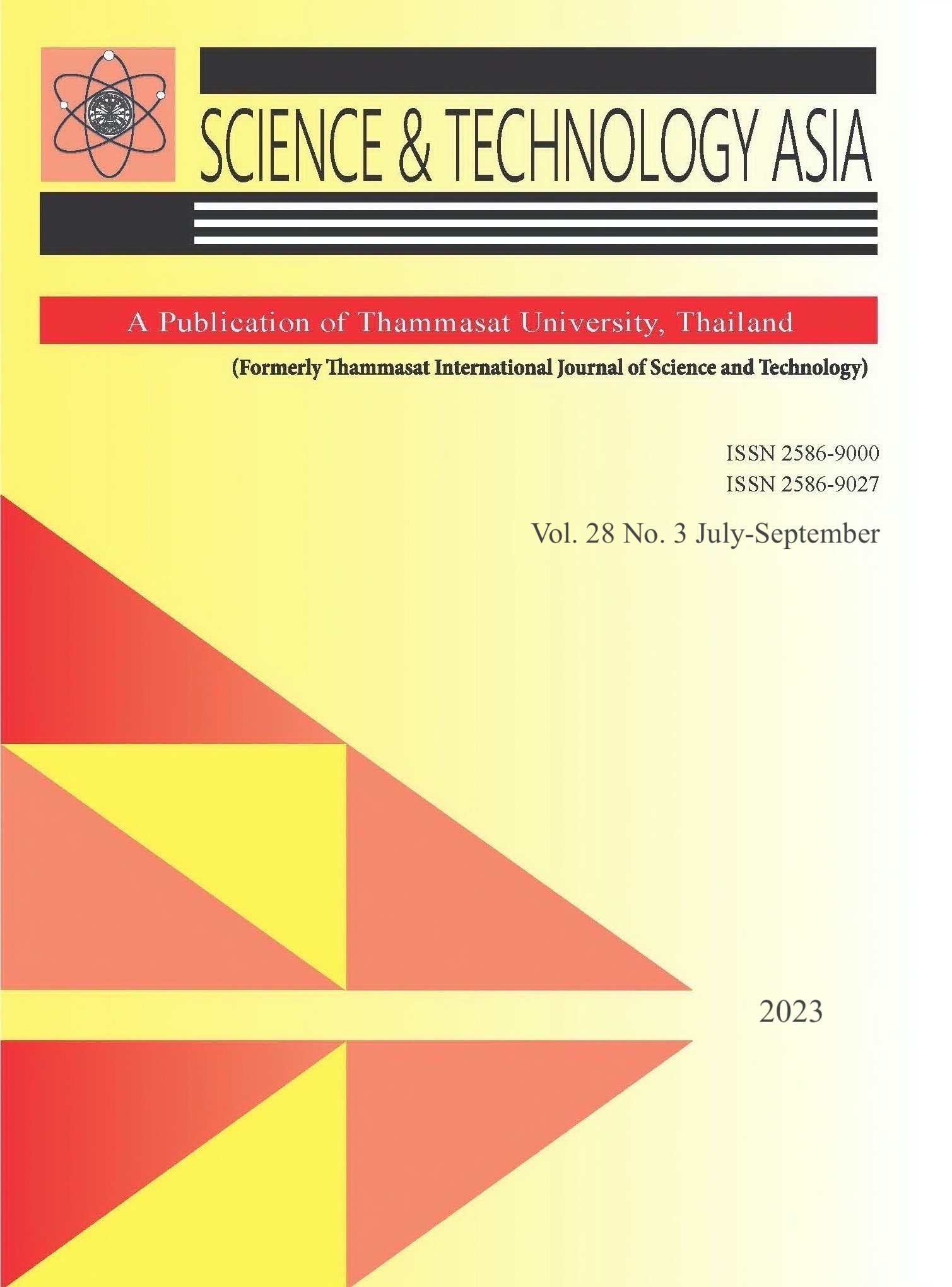Cell Shape Description as a Tool for Assessing Cell Change after Drug Treatments
Main Article Content
Abstract
Cell shape determines cell activities and behavior. Quantitative analysis of cell shape can be performed by computational image-based analysis. Therefore, the aim of this study was to characterize cell-shape change using various cell-shape descriptions. Pre-osteoblasts were treated with the osteoporosis drugs, alendronate and geranylgeraniol. Cell shapes were defined via ImageJ analysis. Parameters, including perimeter, area/perimeter, circularity, roundness and solidity, were quantified. Alendronate and geranylgeraniol treatments generated changes in cell shape, which were compared between control cells and treated cells. Cell perimeter was increased when
geranylgeraniol was added to alendronate-treated cells. Area/perimeter and solidity showed the same trend after treatments. Alendronate decreased both area/perimeter and solidity, while geranylgeraniol increased these parameters toward the baseline level. Circularity was reduced by alendronate and geranylgeraniol. No difference in roundness was observed in either alendronate or geranylgeraniol treatments. Taken together, these parameter measurements demonstrated changes in the cell shape and the cell surface. Each parameter gave distinctive and overlapping information on cell-shape analysis. Evaluation of cells using combined parameters provided a better insight into the cell changes. These data could be applied for the screening of cell changes after treating
with drugs.
Article Details

This work is licensed under a Creative Commons Attribution-NonCommercial-NoDerivatives 4.0 International License.
References
Born AK, Rottmar M, Lischer S, Pleskova M, Bruinink A, Maniura-Weber K. Correlating cell architecture with osteogenesis: first steps towards live single cell monitoring. Eur Cell Mater. 2009;18:49-60, 1-2; discussion.
Kilian KA, Bugarija B, Lahn BT, Mrksich M. Geometric cues for directing the differentiation of mesenchymal stem cells. Proc Natl Acad Sci U S A. 2010;107(11):4872-7.
Fu R, Liu Q, Song G, Baik A, Hu M, Sun S, et al. Spreading area and shape regulate apoptosis and differentiation of osteoblasts. Biomed Mater. 2013;8(5):055005.
Patntirapong S, Korjai N, Matchimapiro M, Sungkaruk P, Suthamporn Y. Geranylgeraniol reverses alendronateinduced MC3T3 cell cytotoxicity and alteration of osteoblast function via cell cytoskeletal maintenance. J Oral Pathol Med. 2021;50(2):191-9.
Kleinhans C, Schmid FF, Schmid FV, Kluger PJ. Comparison of osteoclastogenesis and resorption activity of human osteoclasts on tissue culture polystyrene and on natural extracellular bone matrix in 2D and 3D. J Biotechnol. 2015;205:101-10.
Arslan S, Ozyurek E, Gunduz-Demir C. A color and shape based algorithm for segmentation of white blood cells in peripheral blood and bone marrow images. Cytometry A. 2014;85(6):480-90.
Elosegui-Artola A, Jorge-Penas A, Moreno-Arotzena O, Oregi A, Lasa M, Garcia-Aznar JM, et al. Image analysis for the quantitative comparison of stress fibers and focal adhesions. PLoS One. 2014;9(9):e107393.
Habibi H, Suzuki A, Hayashi K, Salimi H, Hori Y, Orita K, et al. Expression and function of fibroblast growth factor 1 in the hypertrophied ligamentum flavum of lumbar spinal stenosis. J Orthop Sci. 2021.
Patntirapong S, Singhatanadgit W, Arphavasin S. Alendronate-induced atypical bone fracture: evidence that the drug inhibits osteogenesis. J Clin Pharm Ther. 2014;39(4):349-53.
Pasqualato A, Lei V, Cucina A, Dinicola S, D'Anselmi F, Proietti S, et al. Shape in migration: quantitative image analysis of migrating chemoresistant HCT-8 colon cancer cells. Cell Adh Migr. 2013;7(5):450-9.
Hong D, Chen HX, Yu HQ, Liang Y, Wang C, Lian QQ, et al. Morphological and proteomic analysis of early stage of osteoblast differentiation in osteoblastic progenitor cells. Exp Cell Res. 2010;316(14):2291-300.
Kazmers NH, Ma SA, Yoshida T, Stern PH. Rho GTPase signaling and PTH 3-34, but not PTH 1-34, maintain the actin cytoskeleton and antagonize bisphosphonate effects in mouse osteoblastic MC3T3-E1 cells. Bone. 2009;45(1):52-60.
Chen L, Shi K, Frary CE, Ditzel N, Hu H, Qiu W, et al. Inhibiting actin depolymerization enhances osteoblast differentiation and bone formation in human stromal stem cells. Stem Cell Res. 2015;15(2):281-9.
Hart ML, Lauer JC, Selig M, Hanak M, Walters B, Rolauffs B. Shaping the cell and the future: Recent advancements in biophysical aspects relevant to regenerative medicine. J Funct Morphol Kinesiol. 2017;3(2):1-16.
Rocca A, Marino A, Rocca V, Moscato S, de Vito G, Piazza V, et al. Barium titanate nanoparticles and hypergravity stimulation improve differentiation of mesenchymal stem cells into osteoblasts. Int J Nanomedicine. 2015;10:433-45.
Siani A, Robert-Nicoud G, Cellesi F, Tirelli N. Quantitative descriptors for the effect of nature/mechanical properties of solid substrates on fibroblast morphology. J Appl Biomater Funct Mater. 2012;10(3):265-72.
Ren ZX, Yu HB, Li JS, Shen JL, Du WS. Suitable parameter choice on quantitative morphology of A549 cell in epithelialmesenchymal transition. Biosci Rep. 2015;35(3).
Friis MB, Friborg CR, Schneider L, Nielsen MB, Lambert IH, Christensen ST, et al. Cell shrinkage as a signal to apoptosis in NIH 3T3 fibroblasts. J Physiol. 2005;567(Pt2):427-43.


